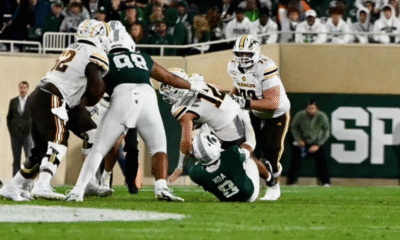Okay, so check this out—I’ve been knee-deep in crypto gaming for years, and somethin’ felt off for a long time. Whoa! The hype cycles shouted loudly, but the actual player experience kept tripping over wallets, chains, and clunky NFT flows. My instinct said the tech was ready, yet adoption lagged. Initially I thought the missing piece was just UX polish, but then realized the problem was more systemic and required cross-chain thinking, better custody options, and realistic incentives that actually work for players.
Seriously? Many projects kept building silos. Hmm… Developers shipped on one chain and wondered why players didn’t follow. Short-term gains looked shiny, though actually the ecosystem needed bridges that didn’t feel like black boxes. On one hand, NFTs promised ownership and provenance. On the other hand, players wanted simplicity and low fees—two things that rarely coexisted in 2020–2022.
Here’s what bugs me about the old model: players had to juggle multiple wallets, learn chain-specific gas mechanics, and accept that their in-game assets might be stranded if a bridge failed. Wow! That sucked. It made grassroots communities splinter, and trust eroded. I kept thinking there had to be a pragmatic middle path, one that gave gamers real ownership while hiding complexity under a friendly UI.

From Toy Projects to Real Player Value
At first the NFT drop model felt like a novelty—cool art and rarity lists. Whoa! Then the wash trading headlines hit and people tuned out. It made me skeptical. Initially I thought NFTs were just digital collectibles, but then I watched them evolve into usable in-game items that change gameplay. Actually, wait—let me rephrase that… NFTs aren’t inherently useful; they become useful when design and infrastructure converge around player needs.
Game designers finally started to ask new questions. Do we need on-chain state for every interaction? Can a sword’s durability be off-loaded to a cheap sidechain without breaking ownership proofs? Can marketplaces support lightning-fast swaps that respect rarity and utility? These are technical questions, yes, but they’re also economic and UX problems. Players want immediate feedback and predictable costs.
Cross-chain swaps address a real pain point. Whoa! They let users move value without creating new accounts on every network. This matters when a game hosts assets on different chains for cost or performance reasons. My gut feeling said bridges were risky, and my experience confirmed it—bridges have been attack targets. So the industry shifted to using well-architected liquidity pools, verified state relays, and axiomatically safer bridging models that limit single points of failure.
Check this out—wallet custody choices matter too. I’ll be honest, I’m biased toward non-custodial control, but I also once lost a private key and learned the limits of pure self-custody. For many gamers, the friction of seed phrases is a conversion killer. That’s why hybrid experiences—custodial for quick onboarding, with clear upgrade paths to self-custody—are practical. If you want to explore one option, a solid bybit wallet can feel like a sensible bridge between casual and power users, offering on-ramps while respecting blockchain-native ownership.
Design Patterns That Actually Work
Short onboarding is non-negotiable. Whoa! You must reduce clicks. Players won’t suffer gas fee confusion. They want to hop in and play. On the developer side, use meta-transactions or gas relayers to abstract costs. Use account abstraction when you can. But remember that abstraction needs transparency—players should know what’s happening without drowning in technical terms.
Composable assets are a big win. Build items as modular NFTs that reference shared metadata and can be combined or upgraded. This makes cross-game interoperability practical, though it also creates new semantics for ownership, licensing, and balance. Initially I thought composability would be automatic, but then teams ran into versioning nightmares and metadata drift.
Market mechanics must incentivize honest participation. Whoa! Tokenomics that reward hoarding destroy play balance. Thoughtful staking and burn mechanisms can keep economies healthy. Also, cross-chain liquidity must be deep enough to support swaps without crazy slippage; otherwise players feel cheated. Designing those systems takes iteration and actual playtests, not just tokenomics slides.
From an engineering view, fallback strategies are crucial. Build graceful degradation so that if a bridge pauses, players can still access a local history or a cached asset state. Hmm… this sounds like layering and redundancy in any good distributed system, but games need it in ways that preserve the player’s sense of permanence.
Practical Tips for Teams and Traders
Okay, practical stuff—start with the player on-ramp. Whoa! That means simple sign-up flows and social logins with careful bridging to blockchain accounts. Offer a demo mode that mints temporary, non-transferable NFTs so users feel the power without committing funds. Offer clear opt-in paths to convert demo assets to on-chain NFTs later.
For traders and power users, support atomic cross-chain swaps with adequate liquidity. Do not skimp on audit trails. Cross-chain operations should log provenance events that are easy to verify, and players should be able to prove ownership even if a bridge goes dark. That’s how trust is rebuilt—through transparency and verifiable records.
Another nit I have: communities matter more than token airdrops. Honest community stewardship beats short-term pump schemes. Developers that listen and pivot based on community feedback will outlast flashy launches. I’m not 100% sure about all long-term governance models, but community-aligned funding feels right.
Quick FAQ
Q: Are NFTs necessary for Web3 games?
A: Not always. Whoa! NFTs become necessary when you need verifiable scarcity, true transferability, or cross-game utility. If the game can deliver those outcomes without on-chain assets, then fine. Use the tech where it adds player value, not as a checkbox.
Q: How safe are cross-chain swaps?
A: They can be safe if built with layered security, audits, and fallback mechanisms. Hmm… bridges can still be targets, so design to minimize attack surface and prefer decentralised liquidity mechanisms when possible.
Q: Which wallet model works best for gamers?
A: Hybrid approaches often win—low-friction onboarding with clear upgrade paths to self-custody. If you want a starting point, investigate a bybit wallet for its accessible on-ramp options and then move toward non-custodial control as users mature.

 FOOTBALL2 days ago
FOOTBALL2 days ago
 FOOTBALL7 days ago
FOOTBALL7 days ago
 FOOTBALL7 days ago
FOOTBALL7 days ago
 BASKETBALL5 days ago
BASKETBALL5 days ago
 FOOTBALL2 weeks ago
FOOTBALL2 weeks ago
 FOOTBALL4 days ago
FOOTBALL4 days ago
 FOOTBALL2 days ago
FOOTBALL2 days ago
 FOOTBALL2 weeks ago
FOOTBALL2 weeks ago





